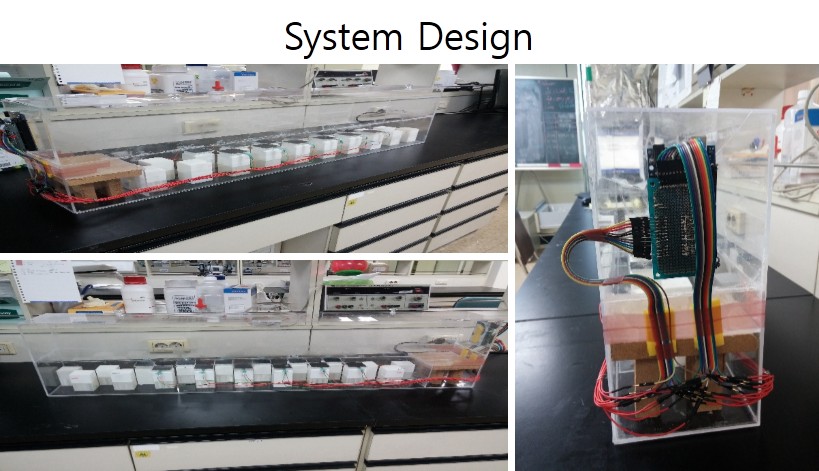Session Information
Date: Sunday, October 7, 2018
Session Title: Technology
Session Time: 1:45pm-3:15pm
Location: Hall 3FG
Objective: To develop a system for evaluating a parkinsonian animal model using the kinetic responses of foot pressures during normal walking
Background: Animal model of Parkinson’s disease plays a critical role in developing clinical treatments as well as understanding the disease itself. Once making an animal model, it is mandatory to evaluate the model based on the kinetic responses of models. Various devices and systems have been commercially available, but every researcher cannot afford these expensive products. Here, we designed an efficient and inexpensive system using a microcontroller (Arduino) to measure the kinetic responses of a model, which were the foot pressures during normal walking.
Methods: A rectangular space (100x10x20 cm) for a normal walk of an animal model was designed, and 12 rectangular pillars (4x4x8 cm) for force-sensitive resistors were placed with regular distance. The resistors were connected to Arduino board (Mega 2560), and again connected to a computer to monitor the real-time measurement of foot pressures. To test the reliability of the developed device, three rats were used. Animal models, which were trained to adjust the walking space, regularly allowed to walk on the resistors. The kinetic responses to the tests were measured and compared before and after model to evaluate the feasibility in the construction of models. Foot pressures were separately analyzed, and the results were compared before and after model. The pressures were presented in histograms, and the distribution in histograms was considered as the effects by Parkinson’s disease.
Results: The foot pressures showed the unbalanced condition of animal models during normal walking, which was possibly related with the symptoms of Parkinson’s disease. Also, the method avoided typical evaluation by separately investigating the foot pressures for each leg before and after model. Therefore, it allowed to assess the effects on each foot, helped to identify the affected foot after model.
Conclusions: A development of a system to measure the foot pressures of a parkinsonian animal model was proposed. Due to intuitive presentation of foot pressures, the results reflected the effects on foot pressures by Parkinson’s disease as well as could be used as a tool for the evaluation of model. Also, the proposed system using foot pressures overcame the issues caused by the generalization in evaluating an animal model, and this would improve the reliability for performing any following experiments in vivo.
References: This research was supported by Basic Science Research Program through the National Research Foundation of Korea funded by the Ministry of Education (NRF- 2016R1D1A1B03930657).
To cite this abstract in AMA style:
G.T. Kim. Development of a system to measure the kinetic responses of parkinsonian animal model [abstract]. Mov Disord. 2018; 33 (suppl 2). https://www.mdsabstracts.org/abstract/development-of-a-system-to-measure-the-kinetic-responses-of-parkinsonian-animal-model/. Accessed December 25, 2025.« Back to 2018 International Congress
MDS Abstracts - https://www.mdsabstracts.org/abstract/development-of-a-system-to-measure-the-kinetic-responses-of-parkinsonian-animal-model/

